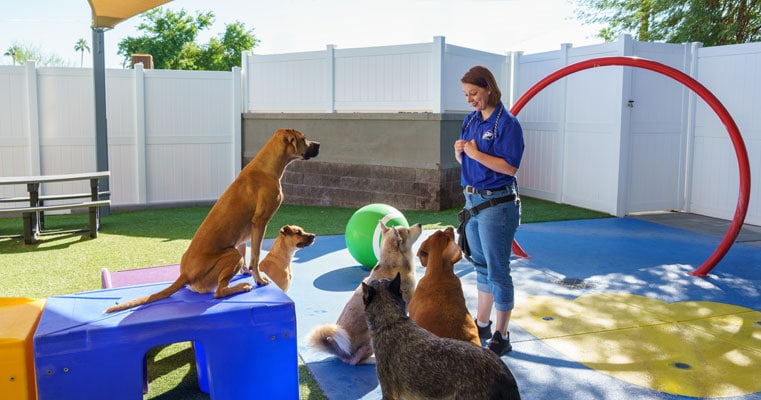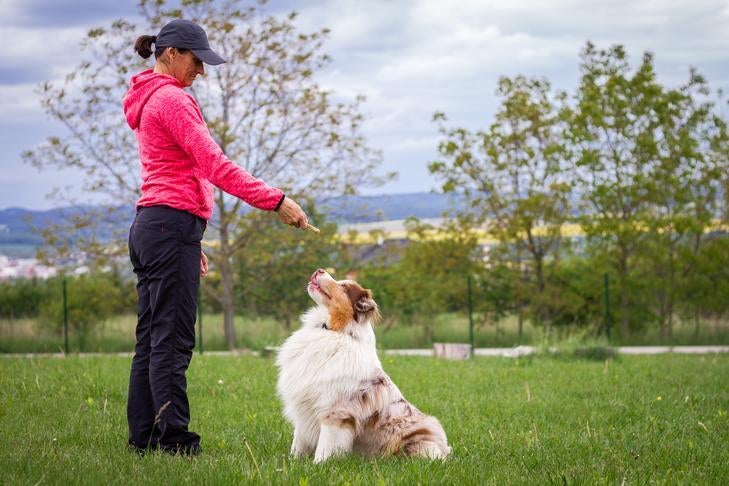How to Master Dog Training and Build a Stronger Bond with Your Pup
How to Master Dog Training and Build a Stronger Bond with Your Pup
Blog Article
Beginner's Overview to Effective Pet Dog Training at Home
Successfully training a dog in your home calls for a nuanced understanding of canine behavior and effective interaction techniques. Establishing clear training goals, utilizing top notch incentives, and preserving uniformity throughout household members are critical elements. Moreover, incorporating training right into daily routines can boost both engagement and retention. Lots of amateur fitness instructors experience obstacles that might prevent progress. To navigate these complexities efficiently, it's necessary to discover a number of crucial elements that can transform your technique and lead to a harmonious relationship with your family pet. What fundamental concepts should every novice understanding to make sure success?
Recognizing Pet Dog Habits
Understanding canine habits is important for effective training and promoting an unified connection between humans and their canine companions. Pet dogs interact mainly with body language, articulations, and faces, making it critical for proprietors to analyze these signals properly. Recognizing habits such as tail wagging, roaring, or shrinking can provide insights into a dog's psychological state and intents.

Usual behavioral concerns, such as aggressiveness, anxiousness, or too much barking, usually stem from misconceptions or unmet needs. Observing and resolving these issues without delay can stop rise and make sure a favorable training experience. By cultivating a deep understanding of pet habits, owners can customize their training approaches to fit their canine buddies, inevitably causing a pleased and mannerly animal.
Necessary Training Tools
A well-appointed training area can significantly boost the effectiveness of dog training in the house. Crucial training tools guarantee that both the pet and the fitness instructor can participate in efficient sessions that promote understanding and bonding.

Purchasing a sturdy chain and a comfortable, well-fitting collar or harness is crucial for safety and control. These tools assist develop limits and make sure the canine remains protected throughout training. Additionally, a designated training location, complimentary from disturbances, help concentration for both the dog and the fitness instructor.
Educating aids such as training pads, cones, or agility equipment can also improve the experience by presenting variety and difficulties. Lastly, having a note pad or electronic application for tracking development can be invaluable, allowing you to note successes and areas for renovation. Using these necessary devices will create a favorable training environment and lay the structure for efficient discovering.
Developing an Educating Routine
Establishing a consistent training regimen is necessary for reliable pet training in your home. A well-structured regular not just assists in enhancing preferred reference habits however additionally provides your pet with a complacency and predictability. To create an effective training routine, begin by identifying certain training objectives, such as fundamental commands, leash strolling, or house-training.
Choose a marked time daily for training sessions, preferably when your pet is responsive and alert. Procedure needs to be short, about 5 to 15 mins, to preserve focus and avoid exhaustion. Consistency in timing and setting will certainly enhance your pet's learning experience.
Integrate training right into daily tasks to strengthen abilities. For instance, method commands throughout strolls or mealtime, which integrates learning right into natural routines. In addition, remain versatile and adjust the regular as needed, fitting your pet's power levels and mood.
Positive Support Strategies
Positive support strategies are essential to reliable pet dog training, promoting wanted behaviors through incentives instead of penalty. This method utilizes positive next stimuli, such as treats, appreciation, or play, to encourage pets to duplicate details actions. The foundation of this strategy is timing; benefits ought to be provided quickly complying with the desired actions to develop a clear organization.
When applying positive reinforcement, it is necessary to choose incentives that are motivating for your pet dog. High-value treats, such as small items of hen or cheese, can be specifically reliable throughout training sessions. Furthermore, varying the incentives can keep your pet's passion and enthusiasm.
Start with simple commands, like "sit" or "remain," and progressively progress to extra complex jobs. Uniformity is essential; ensure that all household participants make use of the exact same commands and incentive systems to avoid complication.
In addition, it is crucial to remain person and prevent frustration. Canines, like people, find out at their very own speed. By cultivating a helpful training atmosphere with positive support, you can improve your pet's understanding experience while reinforcing the bond in between you and your hairy buddy, laying the groundwork for successful training outcomes.
Common Educating Challenges
While training a pet at home can be a rewarding experience, it frequently features a collection of common difficulties that can test both perseverance and uniformity. One common concern is disturbance. Canines might come to be quickly sidetracked by sounds, motions, or perhaps fragrances in their environment, making it tough to maintain their emphasis throughout training sessions.
One more difficulty is inconsistency in commands and reinforcement. If family participants use various signs or incentives, it can perplex the dog and hinder progress. Establishing a unified technique is crucial for reliable communication.
In addition, pet dogs can experience frustration or stress and anxiety, specifically if they do not understand what is anticipated of them. This can cause unfavorable habits, such as barking or chewing.
Ultimately, the timing of support is vital (Dog training). Delayed incentives can diminish the efficiency of positive reinforcement, as pets might fall short to connect the actions with the benefit
Conquering these useful reference difficulties calls for commitment, clear communication, and a structured training strategy. Identifying and dealing with these common barriers will certainly lead the means for an extra pleasurable and effective training experience at home.
Conclusion
In conclusion, effective canine training at home necessitates a detailed understanding of canine actions and efficient interaction strategies. By developing clear training goals and utilizing high-quality treats together with favorable support, the training procedure ends up being a lot more rewarding for both the pet dog and the instructor.
Establishing a consistent training regimen is important for reliable pet dog training at home.Positive reinforcement methods are basic to efficient pet dog training, advertising desired actions through incentives rather than punishment (Dog training). By fostering a supportive training setting via favorable reinforcement, you can improve your pet's learning experience while reinforcing the bond in between you and your hairy friend, laying the groundwork for successful training end results
In conclusion, effective canine training at home necessitates a comprehensive understanding of canine actions and effective communication methods. By establishing clear training goals and utilizing top quality deals with together with positive support, the training procedure comes to be much more satisfying for both the instructor and the pet.
Report this page